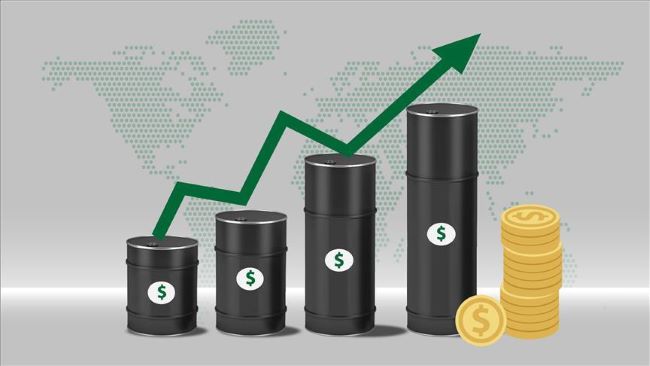Monday saw a rise in the oil market as a result of expectations for higher demand and restricted supply. There was a notable increase in the market prices of US benchmark West Texas Intermediate, ICE Brent, and crude oil.
Concerns about an excess of oil in the world’s supply have been aroused by OPEC+’s announcement of a plan to partially resume crude output in Q4, which has mixed the news for both energy demand and crude prices globally.
On June 2, OPEC+ decided to continue the voluntary 2 million barrel production cuts into Q3, but to progressively reduce them over the course of the next 12 months, starting in October.
The oil cartel promised to keep the restriction on crude production at approximately 39 million barrels per day through the end of 2025. Furthermore, the UAE received a 300,000 bpd boost to its production target for 2025.
An increase in OPEC crude output is negative for oil prices, according to analysts’ notes. OPEC May crude production rose +60,000 bpd to 26.96 million bpd, a 5-month high.
On the downside for prices, Israel’s military is conducting military operations in the southern Gaza city of Rafah despite opposition from the Biden administration.
There is also concern that the war might spread to Hezbollah in Lebanon or even to a direct conflict with Iran. Meanwhile, attacks on commercial shipping in the Red Sea by Iran-backed Houthi rebels have forced shippers to divert shipments around the southern tip of Africa instead of going through the Red Sea, disrupting global crude oil supplies.
There is expectations of increased oil demand during the summer months. This caused positive price movements in the global commodity market.
International benchmark Brent crude traded at $79.97 per barrel, up by 0.44% from the closing price of $79.62 per barrel in the previous trading session. The American benchmark West Texas Intermediate (WTI) traded at $75.83 per barrel at the same time, a 0.40% rise from the previous session that closed at $75.53 per barrel.
Official data on US crude oil and gasoline inventories, to be announced on Wednesday, will signal demand in the world’s largest oil-consuming country.
Increased supply concerns due to the decline in the number of oil drilling rigs in the US and ongoing geopolitical risks in the Middle East also supported price rises.
According to weekly data announced by oil field services company Baker Hughes, the number of oil drilling rigs in the country decreased by 4 to 492 in the week of May 1–7 compared to the previous week.
The number of oil drilling rigs in the US decreased by 64 year over year. Geopolitical tensions in the oil-rich Middle East continue to impact oil prices. Meanwhile, market players are awaiting the interest rate decision from the US Federal Reserve (Fed) due later in the week.
Despite the increase in the unemployment rate announced in the US, non-farm employment data exceeded expectations and strengthened predictions that the Fed will cut interest rates only once this year.
The probability of the Fed making its first interest rate cut in September decreased from 83% to 51% on Friday and from 81% to 77% in November.
The lower probability of an interest rate cut this year put downward pressure on oil prices. Experts are now focusing on OPEC’s monthly oil market report due Tuesday, which will give indicators on the market supply-demand balance.
Oil prices held up relatively well on Friday considering the stronger-than-expected US jobs report and the resulting strength in the USD and US treasury yields.
The data will also likely push back expectations on when the Fed may start cutting rates, ING commodity strategists said in a noted, adding that broader sentiment in the oil market remains bearish.
Recall that crude oil has settled lower for three consecutive weeks and traded down to its lowest since February last week.
The bearish sentiment in the oil market is reflected in speculative positioning. Speculators hold their smallest net long in ICE Brent since 2014, ING said..
It is a busy week for the oil market. OPEC will release its latest monthly oil market report on Tuesday. This will be followed by the EIA’s Short-Term Energy Outlook on the same day. Then on Wednesday, the IEA will release its last monthly report. The market will be keen to see how all three agencies view the outlook for the market, particularly after recent action taken by OPEC+.














